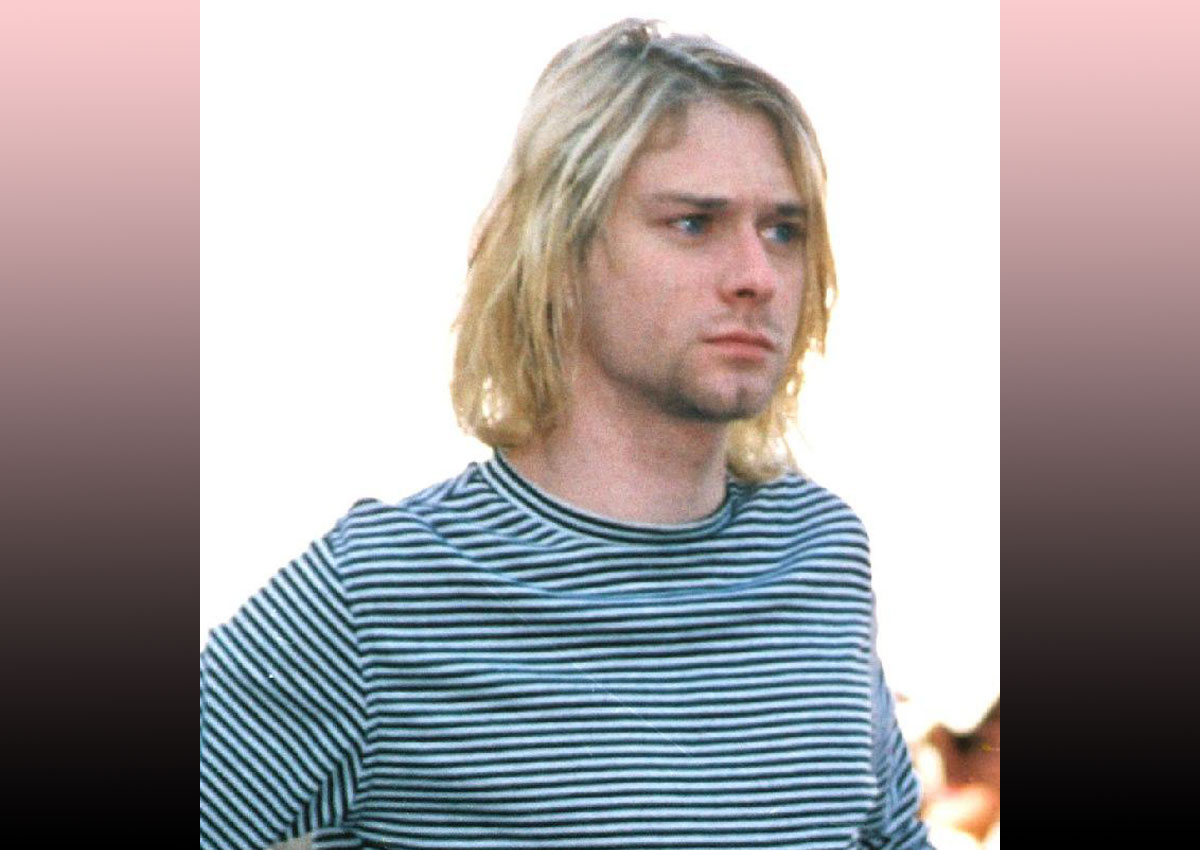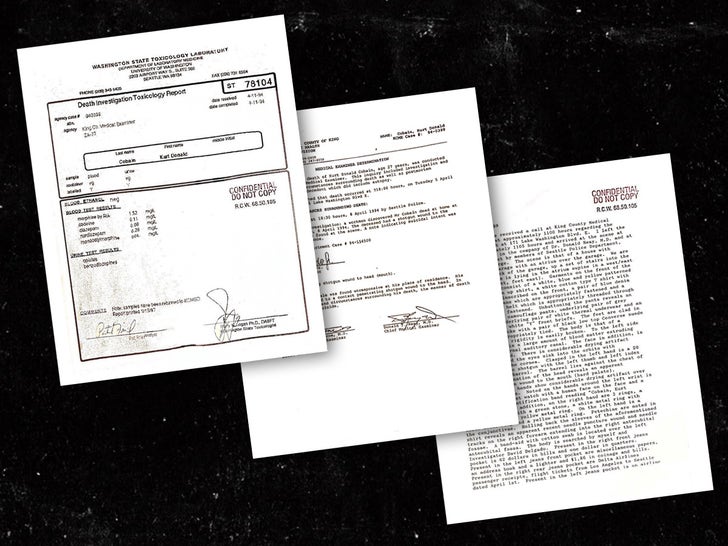Kurt Cobain's legacy as an iconic figure in music history continues to fascinate fans worldwide, even decades after his untimely death. The autopsy photos of Kurt Cobain, while controversial, have become a subject of intense curiosity and debate. These images, which reveal the final moments of a legendary musician, evoke strong emotions and spark discussions about mental health, substance abuse, and the pressures of fame. In this article, we will delve deep into the topic, exploring the facts, controversies, and ethical considerations surrounding these photos.
Kurt Cobain's life and death have been analyzed extensively by fans, researchers, and journalists. His impact on the grunge movement and his role as the frontman of Nirvana left an indelible mark on the music industry. The circumstances surrounding his death, particularly the release of autopsy photos, have only added layers of complexity to his already intriguing story. Understanding the significance of these images requires a careful examination of the events leading up to his passing.
As we explore the autopsy photos of Kurt Cobain, it is essential to approach the topic with sensitivity and respect. The purpose of this article is not to sensationalize his death but to provide a comprehensive analysis of the facts, the controversies, and the broader implications. By the end of this article, readers will have a clearer understanding of the context and significance of these images.
Read also:Seller Smith Funeral Home Obituaries A Comprehensive Guide To Honoring Lives And Preserving Memories
Biography of Kurt Cobain
Early Life and Background
Kurt Donald Cobain was born on February 20, 1967, in Aberdeen, Washington. From a young age, he showed a keen interest in music and art, often drawing inspiration from the punk and rock scenes. His childhood was marked by turbulence, including his parents' divorce when he was eight years old. This event profoundly affected him and influenced much of his later work.
Below is a summary of Kurt Cobain's personal data:
| Full Name | Kurt Donald Cobain |
|---|---|
| Date of Birth | February 20, 1967 |
| Place of Birth | Aberdeen, Washington, USA |
| Occupation | Singer, Songwriter, Musician |
| Spouse | Courtney Love |
| Children | Frances Bean Cobain |
The Tragic Death of Kurt Cobain
Kurt Cobain's death on April 5, 1994, sent shockwaves through the music world. At the age of 27, he was found dead in his Seattle home, the apparent victim of a self-inflicted gunshot wound. The official cause of death was ruled as suicide, following a toxicology report that revealed high levels of heroin and traces of alcohol in his system.
Timeline of Events
- March 1994: Cobain entered a detox facility but left abruptly, sparking concerns about his mental health.
- April 1994: He was reported missing by his wife, Courtney Love, prompting a massive search effort.
- April 8, 1994: His body was discovered by an electrician at his home in Seattle.
Autopsy Photos of Kurt Cobain: The Controversy
The release of autopsy photos of Kurt Cobain reignited debates about privacy, ethics, and the public's right to know. These images, taken during the official investigation, provide a grim glimpse into the final moments of his life. While some argue that they serve as a reminder of the dangers of substance abuse, others believe they exploit Cobain's memory for sensationalism.
Ethical Considerations
Discussing autopsy photos raises ethical questions about how we treat the deceased, especially public figures. The line between respecting someone's privacy and satisfying public curiosity is often blurred. In the case of Kurt Cobain, the release of these images has sparked discussions about the responsibility of media outlets and the impact on his family.
Why Are Autopsy Photos Important?
Autopsy photos play a crucial role in criminal investigations and forensic science. They provide valuable evidence for determining the cause of death and identifying any suspicious circumstances. In Cobain's case, these images helped establish the official ruling of suicide, although they remain a source of speculation and conspiracy theories.
Read also:Love Heitmeyer Funeral Home Ottawa Ohio Obituaries A Comprehensive Guide
Forensic Evidence in Kurt Cobain's Case
According to the King County Medical Examiner's report, Cobain's body showed signs consistent with a self-inflicted gunshot wound. The position of the weapon, the angle of the bullet, and the absence of defensive wounds all supported the conclusion of suicide. These findings were corroborated by toxicology tests that revealed lethal levels of heroin in his system.
Conspiracy Theories Surrounding Kurt Cobain's Death
Despite the official ruling, conspiracy theories about Kurt Cobain's death persist. Some suggest he was murdered, while others believe he faked his death to escape the pressures of fame. These theories are fueled by inconsistencies in the timeline, witness testimonies, and the nature of the crime scene.
Common Theories
- Cobain was killed by someone close to him due to financial disputes.
- He staged his death and went into hiding, living under a new identity.
- The investigation was mishandled, leading to incorrect conclusions.
Impact on Mental Health Awareness
Kurt Cobain's death brought attention to issues of mental health and substance abuse. His struggles with depression, anxiety, and addiction were well-documented, making him a symbol of the challenges faced by many artists. The autopsy photos, while graphic, serve as a stark reminder of the consequences of untreated mental health conditions.
Resources for Mental Health Support
For those struggling with mental health issues, there are numerous resources available:
- National Suicide Prevention Lifeline: https://suicidepreventionlifeline.org
- Substance Abuse and Mental Health Services Administration: https://www.samhsa.gov
- World Health Organization: https://www.who.int
Legal and Ethical Implications
The release of autopsy photos raises legal and ethical concerns. While they are part of public records in many jurisdictions, their distribution can violate privacy rights and cause distress to the deceased's family. Courts and lawmakers continue to grapple with these issues, striving to balance transparency with respect for the deceased.
Privacy Laws in the United States
In the U.S., privacy laws vary by state, but generally, the release of autopsy photos is restricted to authorized personnel. However, leaks and unauthorized sharing can occur, leading to legal consequences for those involved. The Cobain case highlights the need for stricter regulations to protect the privacy of individuals, even after death.
Public Reaction and Legacy
The public reaction to Kurt Cobain's death and the release of his autopsy photos was overwhelming. Fans and admirers expressed grief and disbelief, while critics accused the media of exploiting his tragedy for profit. Despite the controversy, Cobain's legacy as a musical pioneer and advocate for mental health awareness endures.
Remembering Kurt Cobain
To honor Kurt Cobain's memory, fans and organizations have organized memorials, concerts, and charitable events. These initiatives aim to celebrate his contributions to music while promoting awareness of mental health issues. By focusing on his positive impact, we can ensure that his legacy continues to inspire future generations.
Conclusion
In conclusion, the autopsy photos of Kurt Cobain represent a complex intersection of fact, speculation, and emotion. While they provide valuable forensic evidence, they also raise important questions about privacy, ethics, and the responsibilities of the media. Understanding the context and significance of these images requires a balanced approach that respects Cobain's memory and acknowledges the broader implications.
We invite you to share your thoughts and reflections in the comments section below. Your input is valuable in fostering meaningful discussions about this topic. Additionally, explore other articles on our website to learn more about music history, mental health awareness, and the lives of iconic figures.
Table of Contents
- Biography of Kurt Cobain
- The Tragic Death of Kurt Cobain
- Autopsy Photos of Kurt Cobain: The Controversy
- Why Are Autopsy Photos Important?
- Conspiracy Theories Surrounding Kurt Cobain's Death
- Impact on Mental Health Awareness
- Legal and Ethical Implications
- Public Reaction and Legacy
- Conclusion


